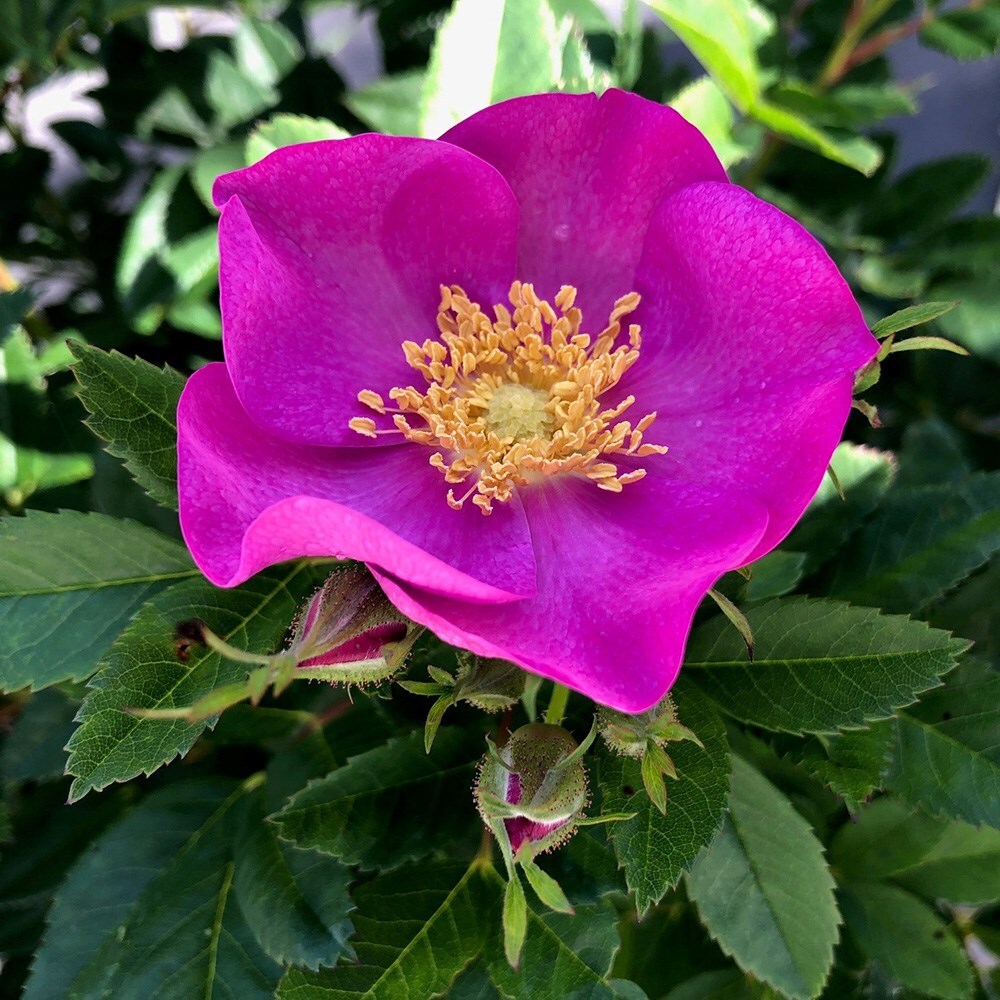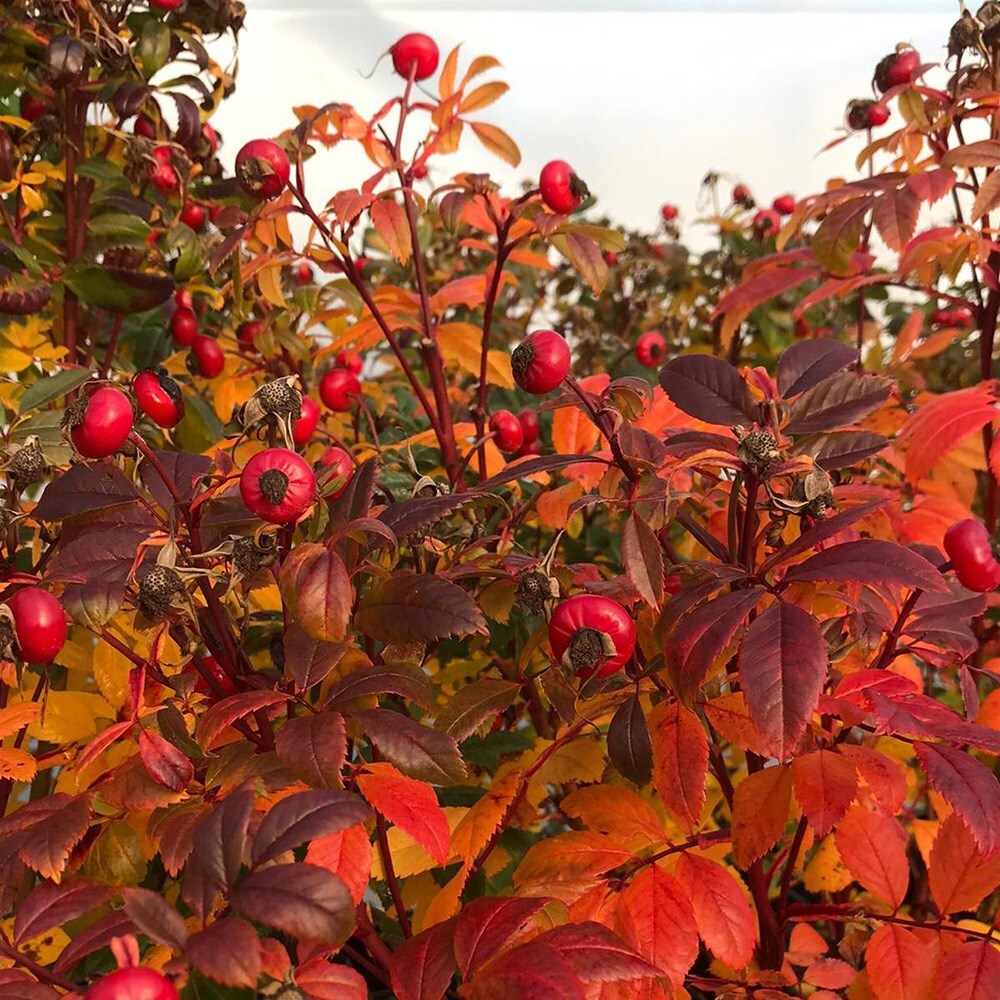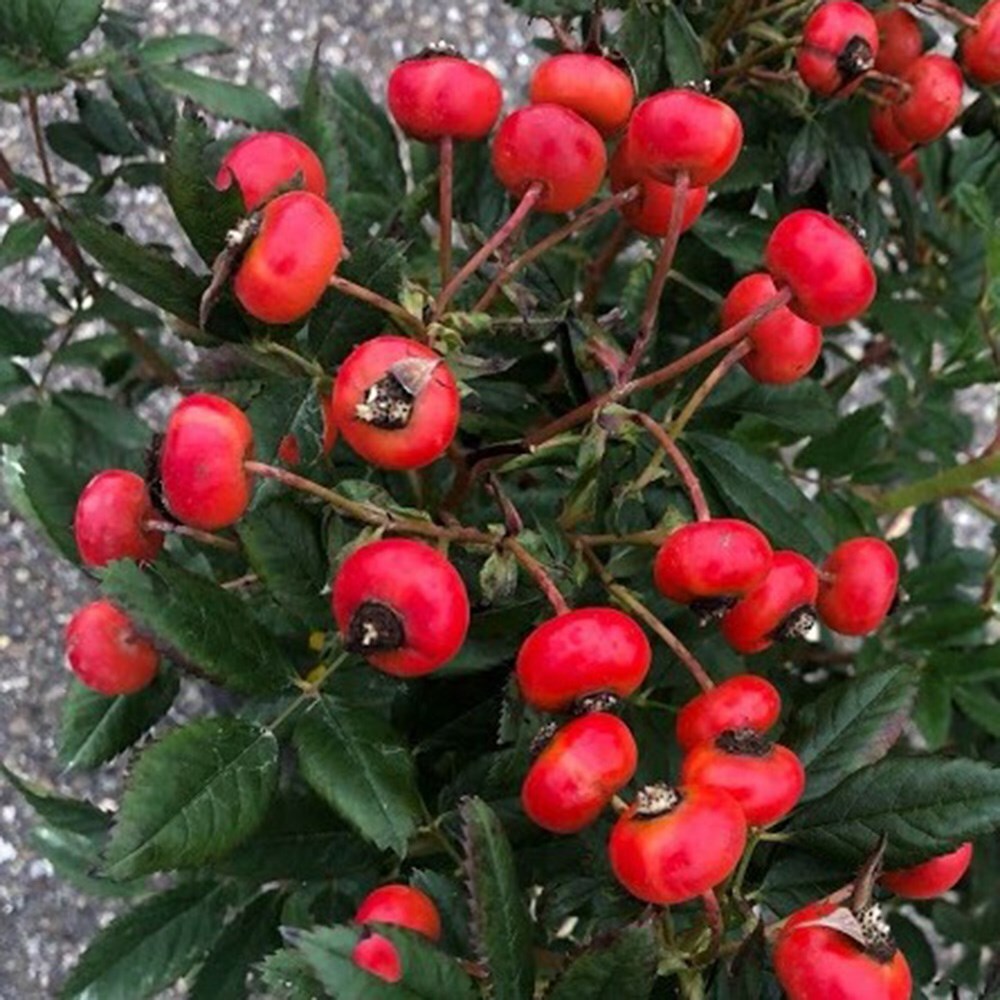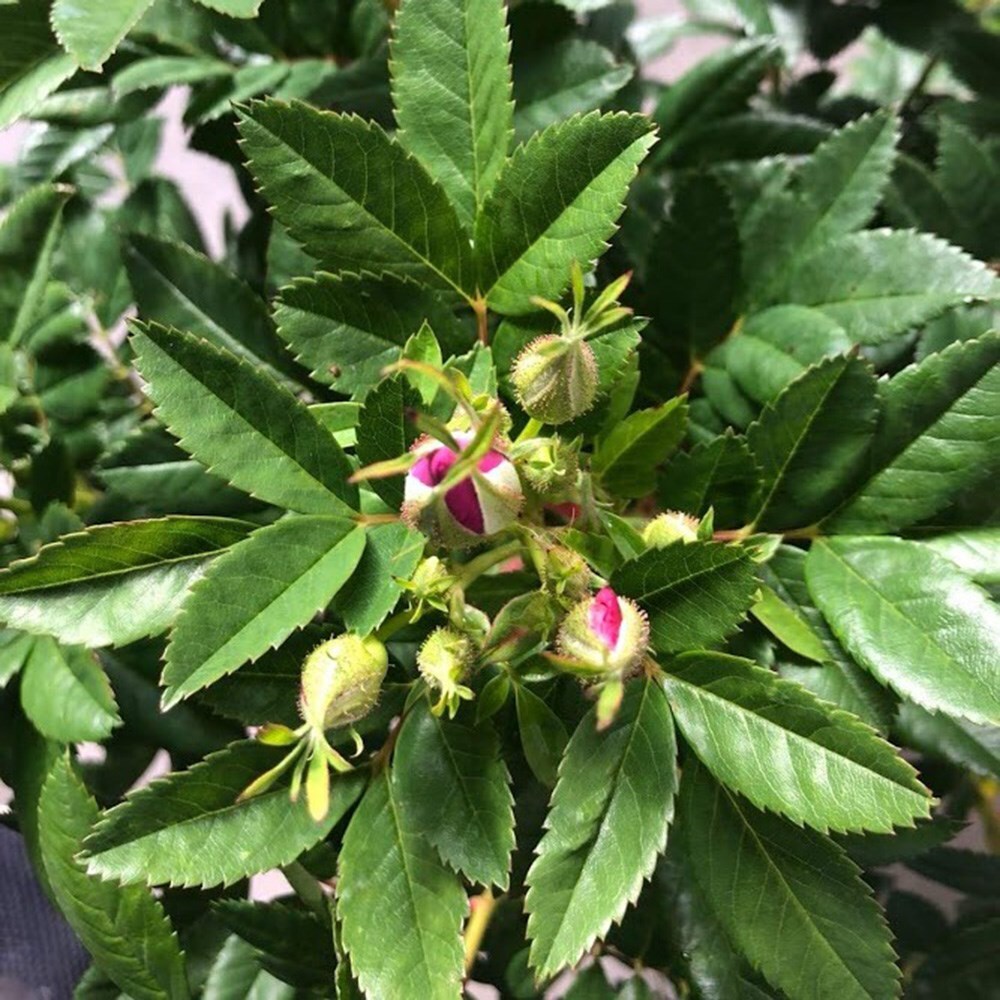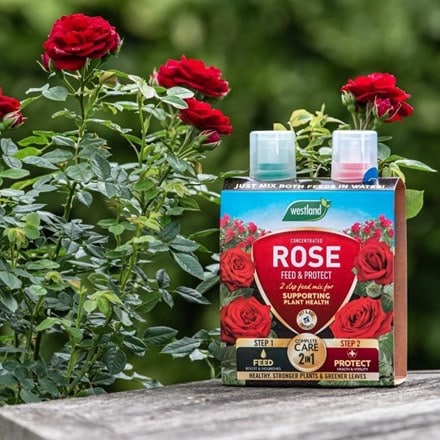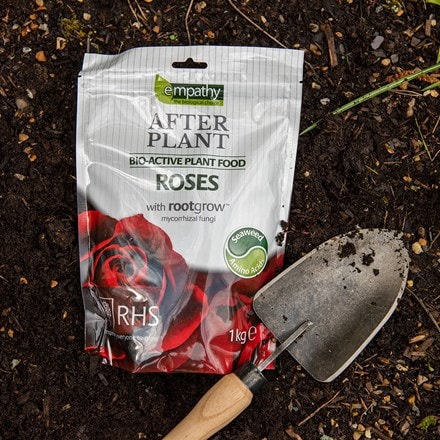Rosa Jam-a-licious ('SPEKjam') (PBR)
rose Jam-a-licious (rugosa)
- 4 litre pot
- £27.19 £31.99
- In stock (shipped within 6-8 working days)
Delivery options
- Standard £5.95
- Position: full sun
- Soil: fertile, humus-rich, moist, well-drained soil
- Rate of growth: fast-growing
- Flowering period: May to June
- Hardiness: fully hardy
This new, compact rugosa rose is ideal for pots or borders, where it will offer several seasons of interest. Fresh green foliage emerges in spring, and this is followed (in late spring and early summer) by a mass of rich pink flowers, each with a single row of petals surrounding a showy, yellow boss of stamens. Throughout summer, the hips start to form, and when fully ripe, these turn bright scarlet and help attract birds into the garden. At around the same time, the foliage takes on rich gold, orange and purple tints, which become more intense before the leaves are shed in autumn. The stems have fewer thorns than many of the other rugosa roses, and this, teamed with the plants' long display and compact growth, make it a sublime all-rounder. - Garden care: If planting in winter, choose a frost-free spell when the soil is not frozen. Roses are quite deep-rooted plants so dig a deep hole roughly twice as wide as the plant's roots and mix in a generous amount of composted organic matter. A top-dressing of a general purpose fertiliser can be worked into the surrounding soil and we also recommend using Rose Rootgrow at this stage to encourage better root development. This is particularly important when planting into a bed where roses have previously been grown as Rose Rootgrow is said to combat rose sickness (aka replant disease).
Remove the plants from their pots and gently spread out the roots before placing them in the centre of the hole. Try to ensure that the 'bud union' (the point where the cultivated rose has been grafted onto the rootstock, and from where the shoots emerge) is at soil level. You can judge this quite easily by laying something flat, like a spade handle or bamboo cane, across the top of the hole. When they are at the right height, back-fill the hole, firming the soil down gently before watering the plant well.
Water generously until well established, and apply a specialist rose fertiliser (following the manufacturer's instructions) each spring. They will also benefit from a generous mulch of composted farmyard manure in spring, but make sure this is kept away from the stems.
As most shrub roses tend to flower best on older stems, they only need a little light formative pruning. Hard pruning should be avoided unless absolutely necessary as it can often ruin the plant's shape. The best time to prune is in late summer after they have finished flowering. While wearing tough gloves, remove dead, damaged, diseased or congested branches completely. If the centre of the shrub is becoming congested, remove one or two of the older stems to their base. If they have become too leggy, then you can often encourage new growth to form by cutting one or two stems back to within 10-15cm above ground level.
- Humans/Pets: Fruit are ornamental - not to be eaten

